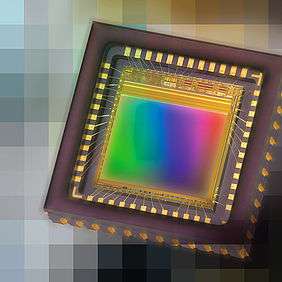THE LAUNCH OF THE SONY PREGIUS™ SERIES IN LATE 2013 MARKED A MILESTONE IN THE HISTORY OF IMAGE SENSORS.
Its outstanding performance, success and large consumer capacity were among some of the triggers resulting in SONY’s decision to shut down their CCD sensor development and production, despite their technology and market leadership. The Pregius series combines the image quality from its Exmor technology with high readout speed, an electronic global shutter and the low noise EXview HAD II Technology from the CCD designs.
Thanks to latest advances in wafer production techniques and pixel design, today’s professional grade CMOS image sensors outperform CCD’s in both speed and image quality. Thereby, they are now also capable to start and stop the light exposure time for all pixels simultaneously, (known as global shutter). CMOS sensor technology has continued to evolve with unprecedented advances in resolution, frame rate, sensitivity, readout-noise, high dynamic range and control features that enable new applications in industrial imaging.
CMOS’ Improved Features and Functionalities
The decisive step in the evolution of CMOS was taking images using the global shutter principle and combining this with vastly increased speed and outstanding image quality. SONY first made this breakthrough with the development of its 1st global shutter generation, the IMX174.
CMOS Benefits and Improvements compared to CCD
- Fast-moving objects can be imaged by simultaneous capture with global shutter, without artifacts and with increased sharpness.
- Based on their architecture and the parallel readout of all pixels, CMOS technology permits very high frame rates.
- The ration between sensor size, active pixel area (fill factor) and the maximum utilization of the incidental light has improved enabling CMOS sensors to be used in low-light applications.
- In extremely high light levels, CMOS sensors do not produce any blooming or smearing effects, which have a negative impact on image recognition.
- CMOS sensors achieve outstandingly low dark noise of up to 1–2 e–, i.e. a very low dark current and high pixel homogeneity.
- Technical innovations, such as backside illumination and microlens arrays, allow CMOS sensors to achieve better sensitivities than CCD sensors.
- The ratio of pixel saturation to sensitivity gives the dynamic range of a sensor, and CMOS sensors now surpass CCD technology in this area with values of up to 80 dB.

SONY® Pregius Sensor Generations
The SONY Pregius series of Global Shutter CMOS sensors has evolved over several product generations. Each generation features similar architecture of the pixels and readout circuits. Every generation brought individual improvements over the previous one, but also came with different trade-offs between pixel size, saturation capacity and sensor size. Therefore, the application requirements will determine which Pregius generation is best suited.
See SONY Pregius Brochure for detailed information of sensor generations and its optimal application fit.

The innovations of the 3rd generation deliver clear improvements, mainly in terms of image quality and speed. Based on these improvements, an increase in performance is seen through improved detection quality in applications with moving objects such as running production lines and robotics applications as well as in the ITS and automotive sectors. The increase in pixel size of 4.5μm produces a much higher saturation (25,000e-) than the second generation. Combined with the low readout noise of 2.5e-, the maximum dynamic range reaches a new peak with 80 dB, making improved light-dark detection feasible even in difficult lighting conditions. Based on the different quality improvements, it will be no longer possible to transfer this increase in image data any faster using the existing standard interfaces. SONY has therefore developed the SLVS-EC standard with 8 channels, which with 19 Gbps doubles the maximum output speed compared to the 2nd generation.
Higher CMOS image quality and speed driving technical progress
Properly matched components are a basic requirement for the success of Embedded Vision in the field of industrial digitization. With the increasing performance of processors and sensors and easy availability, image processing now has a much greater capacity for analyzing and interpreting images more effectively.
In Industry 4.0, artificial intelligence with deep learning approaches supports total automation as well as autonomous, robot-controlled production lines. In the consumer segment, autonomous cars are learning to see, and virtual reality glasses transport wearers to new worlds. CMOS sensors are making a significant contribution to this development. In classic inspection tasks, the design of the CMOS sensor reduces the risk of false measurements or incorrect detection where soldering and assembly tolerances are low.
In combination with the general miniaturization of sensors and electronic components, CMOS technology with its technical advantages and advances is a driver for Embedded Vision, new industrial applications and the integration of image processing into robotics and automation, the Smart Factory and the digitized processes of Industry 4.0. Developers and users can look forward to seeing which technical innovations manufacturers will come up with to begin the next stage of evolution.











